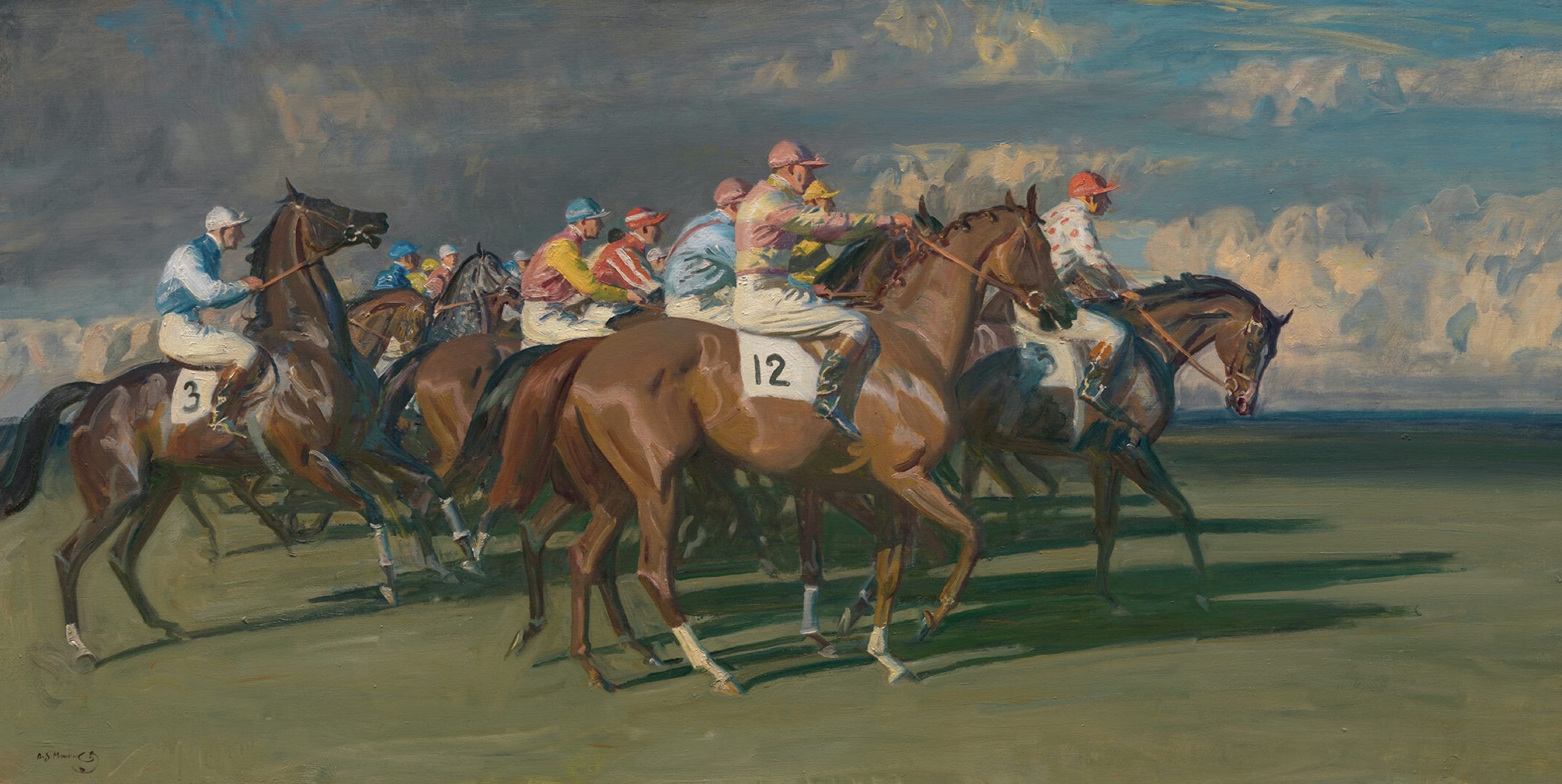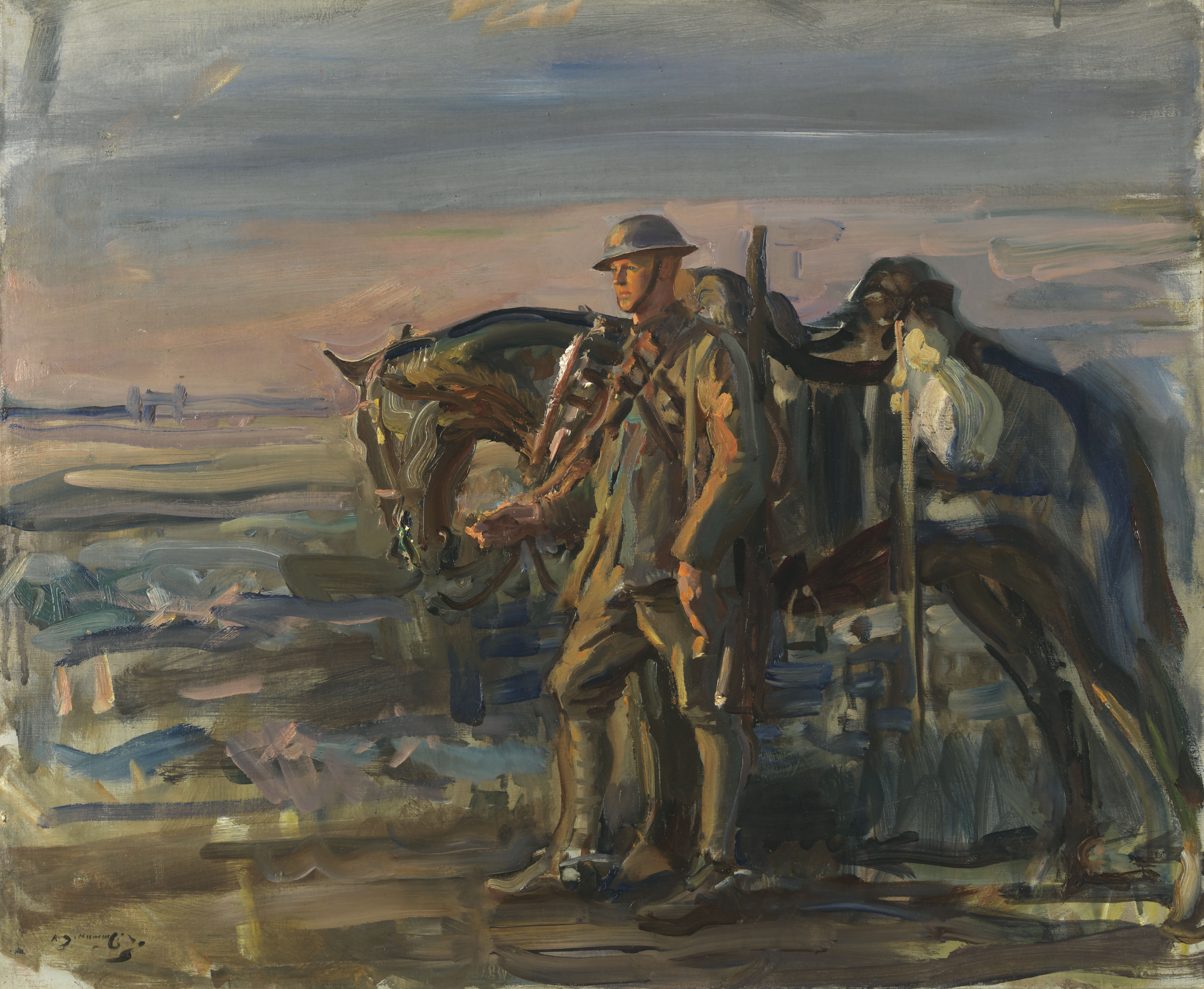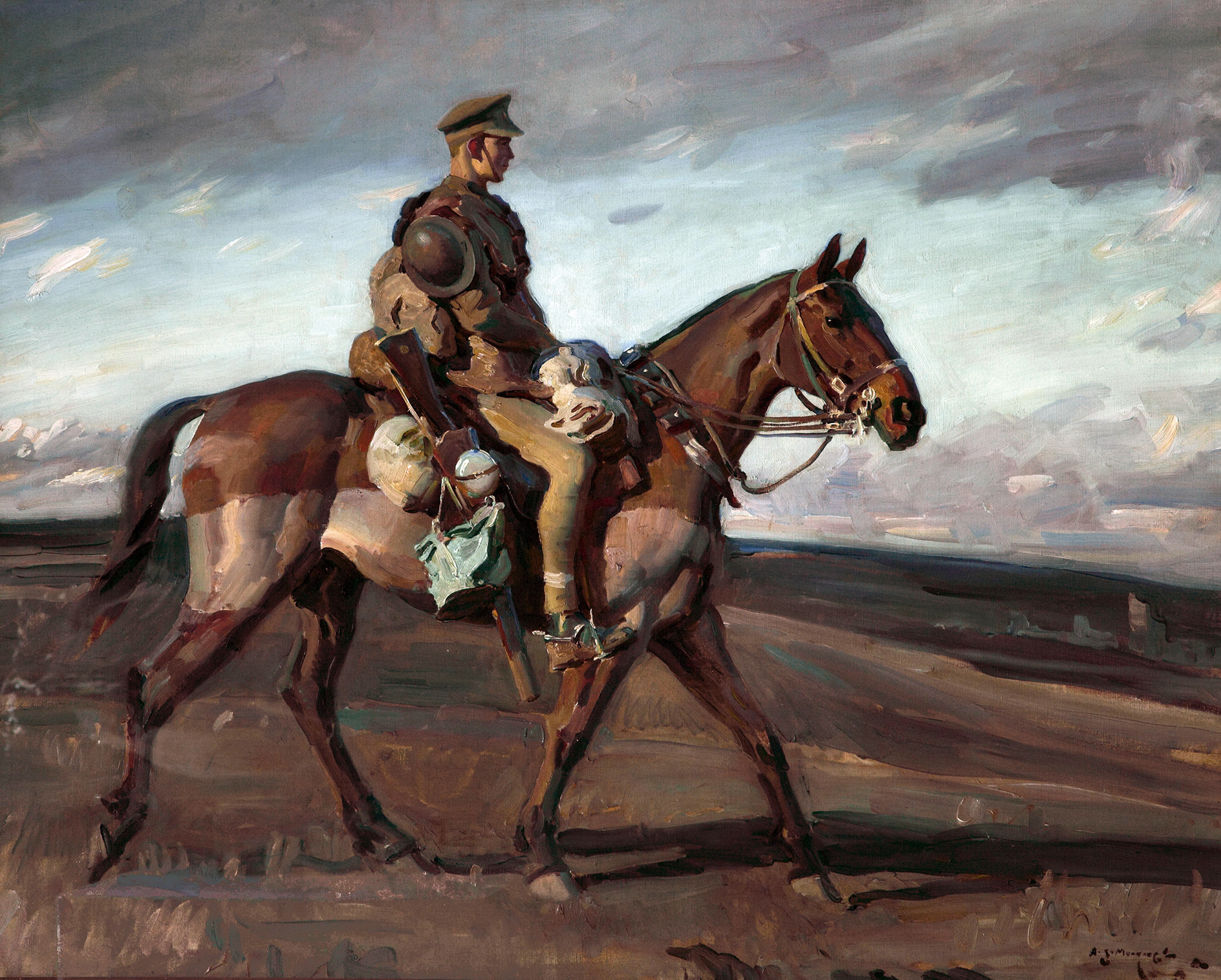My favourite painting: Felix Francis
The thriller writer Felix Francis chooses a classic image by Munnings that 'perfectly sums up the excitement of horse racing'.


Felix Francis on his choice of 'Start at Newmarket: Study No 4' by Sir Alfred Munnings
‘Mankind has painted horses since the Stone Age, but only with the invention of photography have artists been able to portray a horse accurately in motion. George Stubbs, the master of equine anatomy, famously painted the horse Baronet in a characteristic “flying gallop” with all four legs off the ground at once, its front ones sticking forward and its rears outstretched behind — a posture that is actually impossible (unless the horse is Devon Loch and we all know what happened to him!).
'Here, Munnings does not paint horses in gallop, but, nevertheless, he superbly captures the anticipation of the forthcoming contest—the rippling muscles and the sheen of the coats glowing in the afternoon sunshine, as the jockeys jostle for position.
'For me, it perfectly sums up the excitement of horse racing.’
Felix Francis is an author. His latest book is No Reserve.
Charlotte Mullins on 'Start at Newmarket: Study No 4'
Alfred Munnings first showed at the Royal Academy in 1899, after learning to paint at evening classes when a trainee lithographer. Years travelling the country to paint horses and people, from gypsy camps to race meetings, gave way to a stint as an Official War Artist in the First World War, painting Canadian cavalry. He became an academician in 1926 and president in 1944.
Munnings spent much time observing racehorses in action, either at the gallops or in competition. Newmarket was a favourite venue of his and he returned repeatedly to sketch and paint. This work conjures the start of a race, a subject he painted frequently (often with the same rearing horse on the left). A cluster of jockeys prepares to rise, waiting for the race to begin. In Munnings’s three-volume autobiography, he described how hard it was to take in such a fleeting scene: ‘Orange satin, cerise-and-white, blue-and-yellow, emerald green — a large field waiting, waiting, regrouping. At each start, determined to retain the picture in my mind, too often an incident, something a horse is doing, distracts, and once again my purpose is thwarted.’
Famous for his classic portraits of horse and rider, Munnings used his presidency of the RA to champion traditional painting and rail against ‘modern art’. Although his retrospective at the RA in 1956 saw queues down Piccadilly, he was out of step with the contemporary-art world and fell from favour. But his commitment to painting from life ensures his works remain highly sought after today.

In Focus: The wartime masterpieces of Alfred Munnings
Huon Mallalieu welcomes the opportunity to see a significant body of wartime paintings alongside other works by Munnings in his

In Focus: Alfred Munnings, the straight-talking, self-promoting artist who preached that art was 'to fill a man’s soul with admiration and sheer joy'
Pictures should ‘fill a man’s soul with admiration and sheer joy’, Sir Alfred Munnings famously said. Octavia Pollock charts his
Exquisite houses, the beauty of Nature, and how to get the most from your life, straight to your inbox.

Charlotte Mullins is an art critic, writer and broadcaster. Her latest book, The Art Isles: A 15,000 year story of art in the British Isles, will be published by Yale University Press in October 2025.